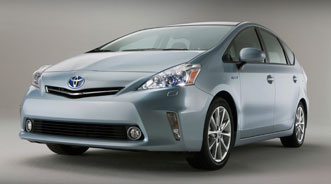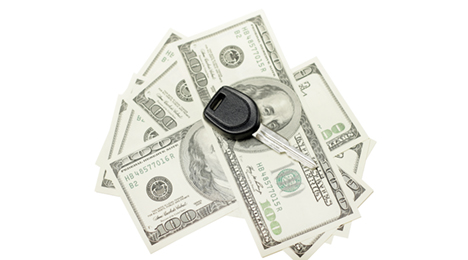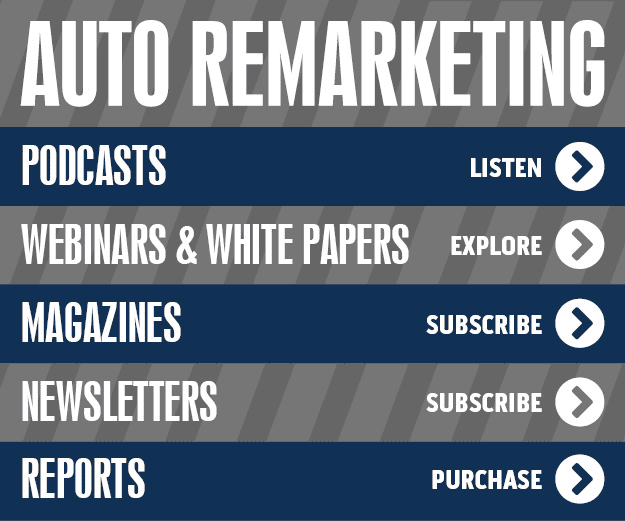One of Long Island’s largest vehicle buying support service providers, GrooveCar, has partnered with NY Auto Giant, the nation’s eighth largest auto group, for a spring sales event.
Targeting more than 500,000 credit union members across Long Island, the event is offering participating credit union members $500 off their purchase of a new or pre-owned vehicle during the course of the event, which concludes April 30.
“This is a tremendous opportunity for the Long Island credit union members,” GrooveCar senior vice president Frank Rinaudo said. “In addition to the advantages of credit union financing, the buyer has access to more than 6,000 vehicles and 15 brands from dealerships across Nassau and Suffolk counties.”
Leading Long Island credit unions such as Teachers Federal Credit Union, Nassau Educators Federal Credit Union, Nassau Financial, Island, PAFCU, North Shore LIJ Health System Federal Credit Union and Winthrop University Hospital Employees Federal Credit Union, are helping to spearhead the event, which also features one year of pre-paid maintenance for all vehicles and 24-hour roadside assistance on all pre-owned vehicles.
Anthony Fiore, director for advertising and marketing at NY Auto Giant which as 22 dealership locations on Long Island, described the benefits of the campaign.
“NY Auto Giant and GrooveCar share a commitment to helping Long Island consumers find the right car at the right price,” Fiore said. “This sale is of particular benefit to credit union members because of all the extras not typically available — the $500 coupon, for instance.”
The latest index results from Fitch Ratings showed both prime and subprime annualized losses inched higher in February as asset performance softened somewhat during the past six months.
However, analysts insisted loss rates are still at historically low levels and only marginally off the record low levels recorded in 2012 and 2013.
“Fitch expects losses to improve in March and April as tax refunds provide a temporary uplift to consumer’s cash-flow,” analysts said.
In the prime sector, Fitch indicated 60-day delinquencies were flat in February at 0.39 percent versus January, and 5 percent below the level recorded in February of last year. The firm noted prime annualized net losses ticked up slightly in February month-over-month to 0.49 percent from 0.48 percent in the previous month.
Analysts pointed out February’s annualized net losses rate of 0.49 percent in the prime market was the highest level in two years, and 23 percent above February of last year.
“Despite this, the loss rate last month was within range of mid-2011 levels, and still below 2001 through 2010 levels, which ranged from 0.52 percent to 2.23 percent,” analysts said.
Turning next to the subprime market, Fitch highlighted delinquencies dropped 1 percent month-over-month through February, “a good sign for asset performance in coming months.”
Analysts indicated subprime 60-day delinquencies stood at 3.80 percent in February, down from 3.84 percent recorded in the prior months.
Fitch determined subprime annualized net losses rose 7.5 percent month-over-month to 6.91 percent in February, settling 25 percent higher than a year earlier. Analysts said the reason was “performance softened over the past year.
“Consistent with the prime sector, loss rates are still well within loss rates recorded in the strong 2010 through 2013 period,” they added.
Fitch continued its latest update by mentioning used-vehicle values were relatively flat in February as “both demand and sales of used vehicles received support from bolstered income levels due to tax refunds.”
The Manheim Used Vehicle Value Index stood at 123.3 in February, marking a 1-percent increase over February of 2013.
“The winter weather continues to stunt consumer shopping and auto sales slowed in recent months, but this may change in coming months particularly if manufacturers boost incentives to draw consumers into showrooms,” analysts said.
On the ratings front, Fitch upgraded 18 classes of notes through early March, up from 13 upgrades issued during the same time in 2013. Of these 18 upgrades, 12 were issued on prime auto loan ABS transactions and six on subprime transactions.
“The ratings outlook is positive for 2014, and the sector outlook on asset performance is stable,” analysts said.
The latest data from Equifax showed the number of subprime auto financing originations climbed for the fifth year in a row, surpassing 7 million contracts for the first time since 2007.
Analysts indicated the number of subprime contracts for 2013 came in at 7.3 million, up from 6.6 million a year earlier. Back in 2007, the subprime origination amount was 7.8 million, off slightly from the recent high of 8.1 million set in 2006.
“In 2013, the independent auto finance companies, the non-bank, non-captive, non-credit union companies, really led the way,” said Lou Loquasto, Equifax’s auto finance vertical leader.
Loquasto explained to SubPrime Auto Finance News what is providing the fuel for this continued subprime resurgence.
“We’ve seen new companies come into the market and private equity investing a lot into the market. That’s reflecting in the data,” he said.
“It’s because that’s where the highest yields are. These private equity companies can invest in anything they want. When they decide to invest in auto, it’s always in subprime auto because they’re chasing the highest yields,” Loquasto went on to say.
Equifax most recent data also showed that finance companies are putting more faith in subprime consumers since the loan cap for these contracts ended up above $18,000 in December — the first time that’s happened since December 2006. The cap stood at $18,120 in December 2013, marking a significant five-year rise since bottoming out at $14,753.
Loquasto insisted that climbing cap number is a “sign of health,” in the subprime auto finance sector. He noted that as applicants come from deeper into the credit spectrum, finance companies often consider a credit score as a smaller piece of the decision to book the deal and for what terms.
“What’s happening in the subprime market, the lenders are being more sophisticated and precise as to what subprime borrowers they make loans to,” Loquasto said. “They’re using a lot of other data like income data, employment data and length of time on their job and other alternative data.
“They might be lending more money to that 540 FICO score borrower, but they’re doing it because they know that this guy does make this much in verifiable income a month and they have been on their job for say, eight years. And the alternative data is showing they’re paying their cell phone bill, their cable bill and other utilities, data that a lot of these lenders didn’t have access to before,” he continued.
“It’s more of a reflection of auto lenders using more tools and being able to be more sophisticated in how they lend to that segment. It’s more than just a credit score,” Loquasto added.
With more tools at their disposal, Loquasto is confident subprime originations will stay on their current trajectory.
“We’re thinking it will continue to grow but maybe not at the pace that it’s been growing. We’ll probably continue to see a very methodical increase, eventually getting back to the 2006, 2007 levels,” Loquasto said.
There now is a much larger pool of funds to underwrite contracts for Toyota’s most fuel-efficient vehicles.
Today, Toyota Financial Services issued what the company believes is the industry’s first-ever asset-backed green bond in the amount of $1.75 billion. Officials highlighted the offering was upsized from $1.25 billion to accommodate demand as institutional investors demonstrated strong interest in this inaugural clean transportation investment opportunity.
The company pointed out the green bond is the newest component of TFS’ broad-ranging funding program and serves to enhance Toyota’s green commitment.
Proceeds of the TFS green bond will be used to fund new retail finance contracts and lease contracts for Toyota and Lexus vehicles that meet specific criteria, including powertrain, fuel efficiency and emissions. There are currently nine vehicles in the Toyota and Lexus portfolio of green vehicles that qualify.
“Investors have enthusiastically welcomed the industry's first Green Bond from Toyota Financial Services as a sign of our company's commitment to environmentally friendly transportation,” TFS chief executive officer Mike Groff said.
“The green bond itself represents the innovation that TFS brings to the financial marketplace in creating asset-backed investments that reflect the values of our company. This, in turn, enables us to provide Toyota customers with attractive financing options for their vehicles,” Groff continued.
To develop the green bond, TFS worked closely with Citi, which has a long-standing relationship with TFS and shares its commitment to green innovation. Citi served as the structuring lead manager of the bond, and BofA Merrill Lynch and Morgan Stanley acted as joint-lead managers.
Officials reiterated their claim that the TFS green bond is the first of its kind in the industry and enhances Toyota’s leadership reputation for green innovation. Toyota currently offers hybrid editions in nearly all of its vehicle categories.
At the end of 2013, Toyota’s global sales of hybrids reached more than 6 million vehicles. The latest million-unit milestone was achieved in the fastest time yet for Toyota, taking just nine months.
Since the launch of the first Prius in 1997, officials determined Toyota’s hybrid vehicles have resulted in approximately 41 million fewer tons of carbon-dioxide emissions than would have been emitted by gas-powered vehicles of similar size and driving performance.
Tyler Dickson, global head of capital markets origination at Citi, said, “We see excellent investment opportunities for the growing interest among investors and consumers alike in environmentally friendly, energy efficient, clean transportation. The marketplace is eager for these investments and Citi is proud to work with Toyota to issue innovative deals like the TFS green bond.”
TFS will commit to use the proceeds of the Green Bond toward the purchase of retail finance contracts and lease contracts for Toyota and Lexus vehicles that meet high green standards as established by three criteria:
— Gas-electric hybrid or alternative fuel powertrain
— Minimum EPA estimated MPG (or MPG equivalent for alternative fuel vehicles) of 35 city / 35 highway
— California Low-Emission Vehicle II (LEV II) certification of super ultra-low emission vehicles (SULEVs) or higher, which would include partial zero emissions vehicles (PZEVs) and zero emissions vehicles (ZEVs)
Qualifying models from Toyota include: Prius, Prius c, Prius v, Prius Plug-in, Camry Hybrid, Avalon Hybrid, and RAV4 EV. From Lexus, qualifying vehicles are CT 200h and ES 300h.
For more information on TFS’ capital markets programs, visit www.toyotafinancial.com. For more information about Toyota’s commitment to the environment, visit www.toyota.com/about/environmentreport2013.
For the first time this year, some dealers are seeing finance companies pull back in their willingness to complete contracts.
According to the latest dealer survey from KeyBanc Capital Markets, the financing outlook still remains favorable as 50 percent of the firm’s survey respondents reported banks and finance companies were becoming more aggressive in lending during the month of February. Meanwhile, 42 percent of participating reported no change from the prior year.
However, the remaining 8 percent reported a pullback, the first time that trend appeared in a KeyBanc survey in several months.
Perhaps the metric is an anomaly as analysts reported a majority of respondents — 58 percent to be exact — indicated that financing for subprime borrowers is loosening further while 33 percent indicated no change in the subprime lending availability. Only 8 percent indicated a tightening in the subprime market.
KeyBanc also reported that survey participants noted used-vehicle gross profit per unit remained positive in February as 67 percent of its respondents indicated an increase of more than $50 per unit year-over-year. Analysts said another 17 percent indicated flat year-over-year results and another 17 percent reported a decline of more than $50 per unit.
“Some new- and used-vehicle sales were lost to disruptive winter weather in Q1 and weather impact remains evident in early March in line with our expectations, however we remain confident that demand will rebound as the weather improves and some sequential improvement is evident in March as 42 percent of our survey respondents indicated volumes were accelerating and our full year earnings estimates remain unchanged,” KeyBanc analysts said.
“Weather impact remained evident in early March as 42 percent of our survey respondents indicated volumes were relatively the same with February’s weaker levels,” they continued. “However, it is reasonable to anticipate some improvement as another 42 percent of respondents indicated various levels of sequential acceleration, in line with and above seasonal trend. The remaining 16 percent continued to indicate a sequential deceleration,” they went on to say.
The latest update of an ongoing TransUnion study showed consumers continue to place an emphasis on paying their auto loans before their mortgages and credit card payments — and by a wide margin.
TransUnion contends this trend has been in place since at least 2003.
Ezra Becker, co-author of the study and vice president of research and consulting for TransUnion, told SubPrime Auto Finance News this week that trends showing the importance of vehicle installment contracts goes back even further. Becker and TransUnion’s analysts arrived at that assertion while examining some data from 2001.
“Even when home values were skyrocketing, even when unemployment levels were essentially at a point where we were at full employment, auto loans were still the first thing to get paid,” Becker said.
The study was completed using a series of monthly cohorts of anonymous consumer information from December 2002 through December 2012. Each cohort was composed of consumers who had at least one mortgage, auto loan and credit card open and in good standing as of the cohort definition month.
The credit performance of each consumer was evaluated 12 months later using a 30 days past due or worse definition of delinquency — thus the performance data span December 2003 through December 2013. Each monthly sample included approximately 2.5 million consumers.
As a result, TransUnion pegged the auto loan delinquency rate at 0.87 percent with the levels for mortgages (1.71 percent) and credit cards (1.83 percent) coming in twice as high.
Becker explained the reason TransUnion is organizing this ongoing study is “to see if consumers choose to go delinquent on one product over another. When they’re running out of money, what do they choose to pay and not pay?”
He continued: “What’s very interesting to us is conventional wisdom historically has been that if consumers pay one thing and only one thing, it’s going to be their mortgage. But that’s not the case.”
Becker then shared some theories as to why consumers often keep their vehicle financing current while letting mortgage or credit card commitments slide.
“When we try to explain it, it’s merely conjecture but it is easier to sell a car than it is to sell a house. You can list your car on Craigslist and get offers. You don’t have to worry about formal appraisals. You don’t have to worry about a formal closing. It’s a very different process as far as the negotiations for auto loans than it is on a house,” Becker said.
“We’re not saying that people value their cars more than their houses. We’re saying that they paid their auto loans more often than their mortgage notes,” he continued. “It could be that even if you can’t afford the auto loan, it’s easier for you to exit that loan and be whole than it is for you to exit the house and be whole.
“There’s also an element that people use their cars to do a lot, to get to work, to get their kids to school, to buy groceries, to do all sorts of things. Unless you’re in one of those limited parts of the country that have effective public transportation like metro Washington D.C. or downtown Chicago or New York, it is pretty tough to get around without a car. It’s certainly more inconvenient,” Becker went on to say.
Since Credit Acceptance Corp., is planning to purchase up to 637,420 shares of its outstanding common stock later this month, the company offered some operating results for the two months of the year as the industry navigated through the peak of tax season.
Credit Acceptance reported this week that the company enjoyed an 18.1-percent jump in originations above what the finance company posted in January and February of last year. The company originated 39,423 contracts, up from 33,367 deals during the same span a year ago.
Officials added the dollar volume of the contracts they book in January and February also spiked 20.1 percent.
“We believe a delay in federal income tax refunds in 2013 contributed to the decline in unit and dollar volumes during the first quarter of 2013 and may have also contributed to the increase in unit and dollar volumes during the two months ended Feb. 28,” officials said.
The company’s active dealer base also jumped during the first two months of this year. After January and February of last year, Credit Acceptance had 3,822 active dealers in its network. Following the first two months of this year, that amount jumped 17.2 percent to 4,480.
According to a new survey by financial information company Sageworks, U.S. banks and credit unions that are preparing for proposed changes to how they must estimate credit losses anticipate they’ll eventually need to boost allowances for loan and lease losses by up to 50 percent
Among more than 300 bankers surveyed during a recent webinar, Sageworks indicated 87 percent said they expect an increase of up to 50 percent to these rainy-day type funds under a credit-loss model proposed by the Financial Accounting Standards Board, the independent body responsible for establishing generally accepted accounting principles.
The company noted only about 11 percent of those surveyed expected no impact to the reserve if the board adopts the leading proposal.
Sageworks analyst Regan Camp explained higher allowances for expected loan and lease losses (called the ALLL) would have pros and cons for financial institutions, business customers, individuals and shareholders.
“The ALLL is probably one of the most, if not the most, important estimates on a bank’s balance sheet, because ensuring you have adequate reserve levels is essential to a bank’s safety and soundness,” Camp said.
“At the same time, as banks reserve more capital for expected losses, they have less available to lend, which means they have less available with which to generate earnings – something shareholders might not like,” he continued.
The expectations among bankers surveyed by Sageworks are consistent with an earlier poll by Sageworks and with previous comments by Comptroller of the Currency Thomas Curry.
Curry in September told a banking conference that implementing the FASB proposal would require most banks to boost allowances, probably around 30 to 50 percent.
Camp pointed out that having less unreserved capital could also tighten credit availability and potentially affect loan terms for businesses and individual customers.
“That’s because financial institutions, which now estimate the upcoming year’s losses on a loan based on a historical review of at least one year of past performance, would have to project losses (and make reserves) based on expected losses for the life of the loan — whether that’s one year, five or 30,” he said.
“From the financial institutions’ perspective, the higher the risk of the loan, the more the reserve’s going to be, and more capital is tied up that I can’t make money from,” Camp went on to say. “The bank’s going to look extra close at that loan when it goes through underwriting.”
Survey participants were volunteers drawn from those attending a webinar hosted by Sageworks on the FASB’s proposed changes.
About half of the webinar participants represented banks and credit unions with assets of less than $500 million, and 36 percent represented institutions with assets topping $1 billion. The remaining 16 percent had total assets between $500 million and $1 billion.
Assuming the current proposal is finalized this year (“and that’s a big ‘if’,” Camp said), financial institutions might have a year or so to implement changes to ALLL calculations, including the ability to gather and compute what Sageworks estimates will be up to 1,000 times more data on loans than they’re currently collecting.
“Many financial institutions are trying to determine how and when to make changes, something that’s particularly challenging for smaller banks and credit unions, which may have fewer resources at the ready and which may be impacted relatively more if big swings in reserves are ultimately required,” Camp said.
Meanwhile, Camp mentioned the OCC has warned banks not to reverse their reserves too quickly and count that income toward earnings, even if loss rates have been declining compared with historical rates as the economy and borrower health have improved.
Instead, Camp said banks are being encouraged to hold onto some unallocated reserves in light of uncertainty in the economy.
“Holding onto reserves might also benefit banks as they grapple with the uncertainty tied to the FASB changes,” Camp said.
“That’s something shareholders can be assessing now,” he added. “Is your bank one that’s recognizing these excess reserves as income when they report earnings, and if so, is that maybe of concern to you? Or are they holding onto these in anticipation of this new requirement?”
Of the Top 20 finance companies in the used-vehicle market, only eight gained market share year-over-year as of the close of the fourth quarter.
And according to Experian Automotive, many of the operations that lost ground in Q4 saw their market shares soften by double digits.
Analysts indicated Wells Fargo continues to be the market share leader in used-vehicle financing, holding 6.83 percent at the end of 2013. That’s up 6.3 percent from Q4 of 2012.
Experian pointed out the next three market share holders made year-over-year gains in Q4, including:
— Capital One: 3.91 percent, up 5.3 percent
— Ally Financial: 3.8 percent, up 3.8 percent
— Chase: 3.79 percent, up 5.2 percent.
Meanwhile, the remainder of the Top 20 used-vehicle financing market holders consisted of companies that made some significant gains or sustained some noteworthy declines. Experian’s Q4 data ended up this way:
— Toyota: 2.24 percent, down 9.7 percent
— Santander: 2.20 percent, down 22.4 percent
— CarMax: 1.54 percent, up 6.6 percent
— Credit Acceptance: 1.53 percent, up 3.5 percent
— Bank of America: 1.37 percent, down 24.1 percent
— Fifth Third Bank: 1.23 percent, down 19.5 percent
— USAA: 0.99 percent, up 2.3 percent
— Huntington Bank: 0.98 percent, down 2.6 percent
— Chrysler Capital: 0.98 percent (no comparison)
— BMW Bank: 0.98 percent, down 0.6 percent
— TD Auto Finance: 0.94 percent, down 40.9 percent
— Westlake: 0.93 percent, down 5.4 percent
— SunTrust Bank: 0.92 percent, down 1.5 percent
— Navy FCU: 0.85 percent, up 8.2 percent
— AmeriCredit: 0.82 percent, down 13.9 percent
— Ford: 0.78 percent, down 17.2 percent
On the new-vehicle side, Experian determined only seven of the top 20 market share holders posted year-over-year gains in Q4. But those companies that did enjoyed jumps of at least 8.8 percent.
The Top 20 new-vehicle market share holders as of the fourth quarter are:
— Toyota: 8.34 percent, down 7.6 percent
— Ford: 8.18 percent, up 9.9 percent
— Honda: 7.99 percent, up 13.1 percent
— Chase: 6.38 percent, down 3.4 percent
— Nissan/Infiniti: 6.31 percent, up 15.6 percent
— Ally Financial: 5.85 percent, down 28.4 percent
— Capital One: 4.40 percent, up 20.0 percent
— Wells Fargo: 4.04 percent, up 17.5 percent
— Chrysler Capital: 2.81 percent (no comparison)
— Hyundai: 2.52 percent, down 11.1 percent
— US Bank: 1.91 percent, down 9.6 percent
—World Omni: 1.89 percent, up 8.8 percent
— Bank of America: 1.86 percent, down 48.9 percent
— TD Auto Finance: 1.84 percent, down 20.8 percent
— PNC Bank: 1.71 percent, up 34.5 percent
— Fifth Third Bank: 1.41 percent, down 19.9 percent
— BMW Bank: 1.39 percent, down 10.7 percent
— RBS Citizens: 1.36 percent, down 16.3 percent
— SunTrust: 1.27 percent, down 19.5 percent
— VW Credit: 1.26 percent, down 23.5 percent
With an average of tax refund of more than $3,000 coming to consumers, GOBankingRates analysts sought out to find the states and cities that boast the lowest interest rates on new-vehicle loans this month.
The site’s study determined the five cheapest states for financing a new vehicle include:
— Hawaii: four-year loan at 1.9 percent
— Delaware: five-year loan at 2.34 percent
— Rhode Island: five-year loan at 2.34 percent
— Washington, D.C.: five-year loan at 2.34 percent
— Virginia: five-year loan at 2.44 percent
Meanwhile, the site found the five cities with the lowest new-model loan rates for a three-year contract to be:
— Detroit: 2.67 percent
— Long Beach, Calif.: 2.71 percent
— Oakland, Calif.: 2.72 percent
— Portland, Ore: 2.80 percent
— New York: 2.81 percent
This study surveyed base auto loan rates for three-, four- and five-year terms from banks and credit unions located in the United States as of March 3. Data was compiled from the GOBankingRates interest rate database, which in partnership with Informa Research Services, aggregates interest rates from more than 6,000 financial institutions.
GOBankingRates managing editor Casey Bond explained why these rates are no noteworthy in connection with the height of tax season currently ongoing.
“As the Fed rolls back on its quantitative easing initiative, which kept interest rates artificially low for more than five years, rates will begin to rise again, making the cost of borrowing increase as well,” Bond said.
“The average tax refund is equivalent to a 20 percent down payment on a $15,000 auto loan; combined with today’s very low interest rates, it is a great time to buy a car,” Bond continued. “In fact, qualified car buyers can expect to find a three-year loan around just 3 percent. Three years ago, you’d pay double.
“Car loan rates won’t stay this low for too much longer. Eventually, auto lenders will need to increase the cost of borrowing to match the national rising rate trend. For anyone considering a vehicle purchase, this tax season might be the last chance to get in on an auto loan at a rock-bottom rate,” Bond went on to say.












